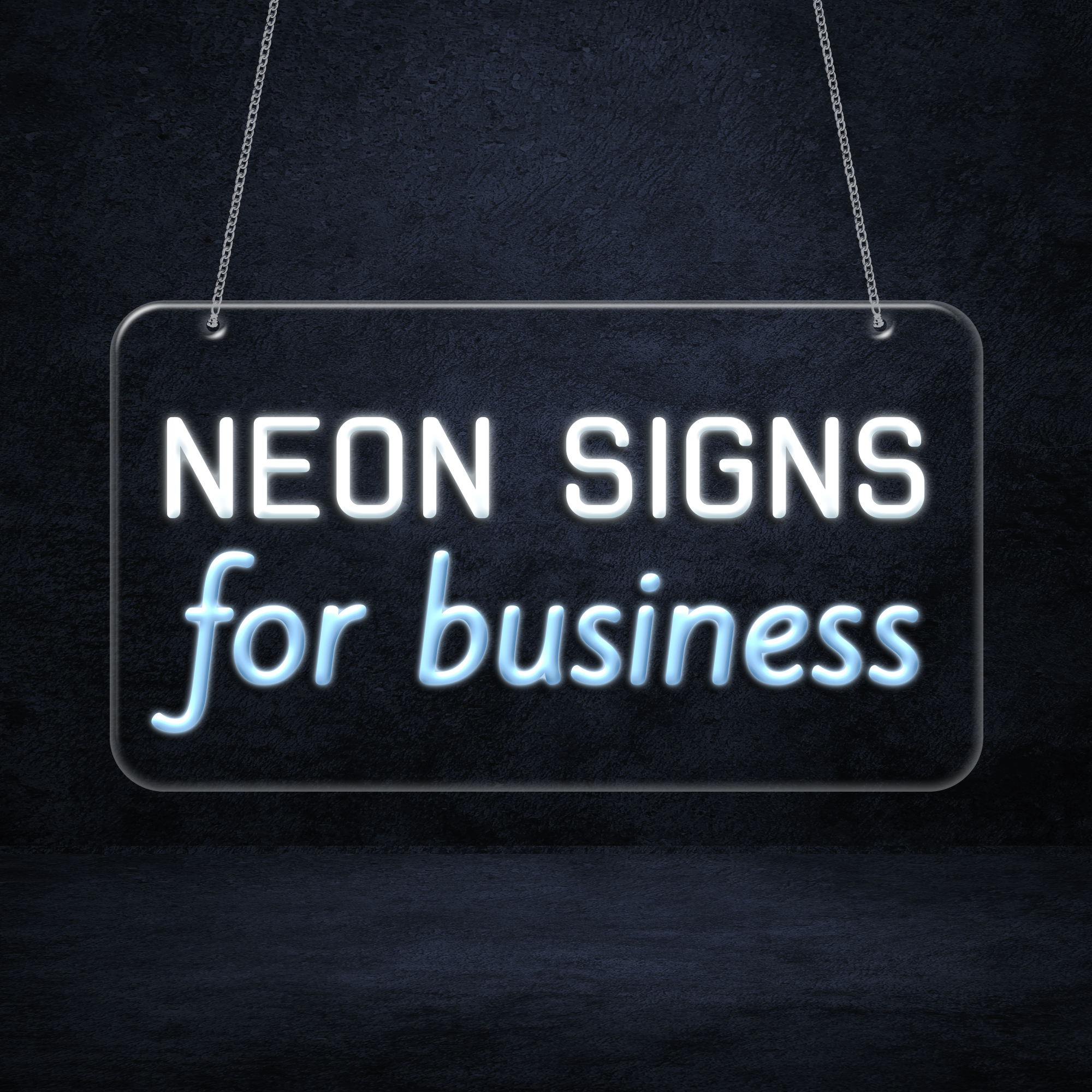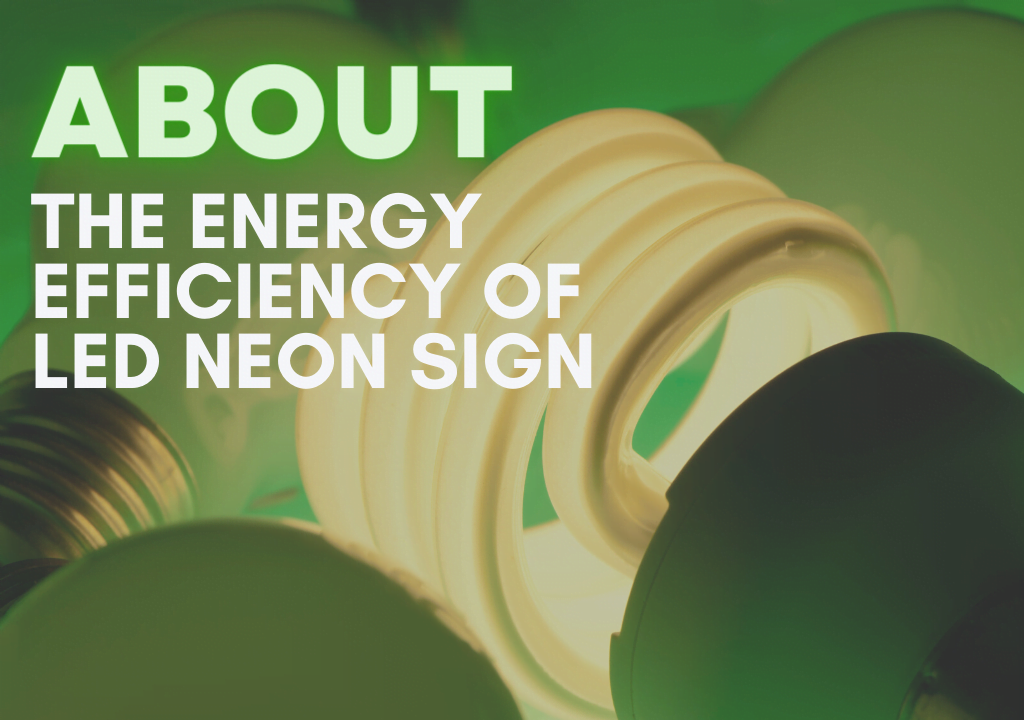From bustling cities to quaint local stores, neon signs have always been a spectacle of interest. But as we inch forward in time, the traditional neon signs have found a worthy successor in LED neon signs, which offer several advantages including energy efficiency. Neon signs are a popular choice for businesses and individuals looking to add some flair to their signage. However, traditional neon signs can be expensive to operate due to their high energy consumption. LED neon signs have become an increasingly popular alternative, but are they truly energy efficient? In this post, we’ll explore the energy efficiency of LED neon signs and compare them to traditional neon signs.
Energy Efficiency of LED Neon Signs: Brightening with Less Power
LED (Light Emitting Diode) technology offers significant advantages in terms of energy efficiency. LED neon signs consume less energy compared to traditional neon signs, making them a more sustainable choice. LED lights are highly efficient in converting electricity into light, resulting in reduced power consumption and lower energy bills.
LED neon signs also have a longer lifespan than traditional neon signs, which means fewer replacements and less waste. Their durability and efficient design contribute to their eco-friendly appeal, making them an excellent choice for environmentally conscious consumers.
LED neon signs are made from flexible LED tubes that are shaped to resemble traditional neon tubes. The LED tubes contain small LED lights that emit light when an electrical current is passed through them. LED neon signs are typically powered by low voltage DC power supplies and are more energy-efficient than traditional neon signs.
LED Neon Signs Energy Efficiency
LED neon signs are more energy-efficient than traditional neon signs due to their use of LED lights. LED lights are significantly more efficient than traditional neon lights, which means that LED neon signs use less energy to produce the same amount of light. In addition, LED neon signs are often powered by low voltage DC power supplies, which are more efficient than the high voltage AC power supplies used by traditional neon signs.
Comparing LED Neon Signs to Traditional Neon Signs
Traditional neon signs are known for their high energy consumption. A typical neon sign can consume anywhere from 15 to 20 watts per linear foot. In comparison, LED neon signs typically consume around 3 to 4 watts per linear foot. This means that LED neon signs are up to 80% more energy-efficient than traditional neon signs.
Advantages of LED Neon Signs
Energy Savings
One of the biggest advantages of LED neon signs is their energy savings. LED neon signs consume significantly less energy than traditional neon signs, which can translate into significant cost savings over time.
Durability
LED neon signs are more durable than traditional neon signs. Traditional neon signs are made from glass tubes, which can break easily. LED neon signs, on the other hand, are made from flexible plastic tubes that are much more resistant to damage.
Longevity
LED neon signs have a longer lifespan than traditional neon signs. Traditional neon signs typically last for around 30,000 to 50,000 hours, whereas LED neon signs can last for up to 100,000 hours.
How to Choose an LED Neon Sign
Size
When choosing an LED neon sign, it’s important to consider the size of the sign. LED neon signs come in a variety of sizes, so it’s important to choose a size that is appropriate for the intended location.
Color
LED neon signs come in a variety of colors. When choosing a color, it’s important to consider the intended use of the sign. For example, a sign for a business may want to use the business’s branding colors.
Quality
When choosing an LED neon sign, it’s important to consider the quality of the sign. Look for signs that are made from high-quality materials and have a warranty.

FAQ: Frequently Asked Questions about LED Neon Sign Energy Efficiency
Q1: Are LED neon signs more energy efficient than traditional neon signs? Yes, LED neon signs are more energy efficient than traditional neon signs. They consume less power and have a longer lifespan, making them a sustainable choice.
Q2: Do LED neon signs save on energy costs? Absolutely! LED neon signs consume less energy, resulting in lower electricity bills compared to traditional neon signs.
Q3: Can LED neon signs be dimmed to save energy? Yes, LED neon signs can be easily dimmed or adjusted to suit your desired lighting level, offering energy-saving benefits.
Q4: How long do LED neon signs last? LED neon signs have a longer lifespan than traditional neon signs, often lasting for tens of thousands of hours, reducing the need for frequent replacements.
Q5: Are LED neon signs environmentally friendly? Yes, LED neon signs are environmentally friendly. Their energy efficiency, longer lifespan, and lower power consumption contribute to a reduced carbon footprint.
In conclusion, LED neon signs are the torchbearers of energy efficiency in the realm of neon lighting. They offer significant advantages including lower power consumption, extended lifespan, reduced environmental impact, and cost savings. As we strive for more sustainable solutions, LED neon signs light the way forward, adding a vibrant touch to your décor without compromising on energy efficiency. Embrace the luminary truth of LED neon signs, and step into the future of sustainable lighting!.
Looking for more about LED neon signs? Check out our blog post on Neon Sign Maintenance Tips and “Glass vs LED Neon Signs“.






2 thoughts on “Are LED Neon Signs Energy Efficient”
-
Pingback: A Dive into the Inner Workings of LED Neon Signage - EUneon
-
Pingback: Searching For LED Neon Signs for Events? - EUneon
This site uses User Verification plugin to reduce spam. See how your comment data is processed.